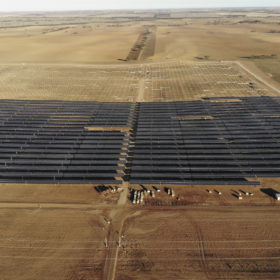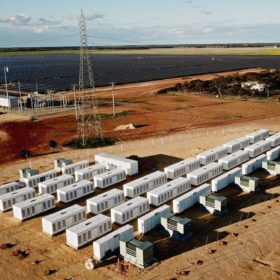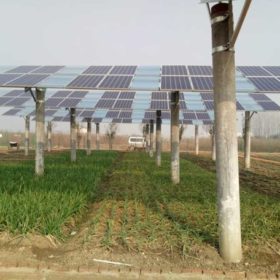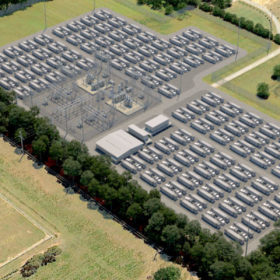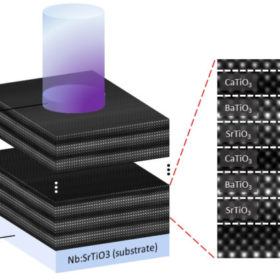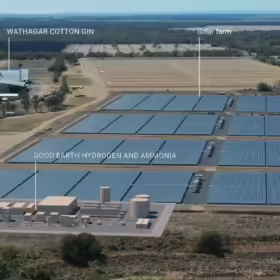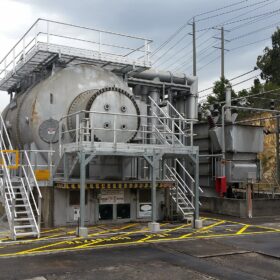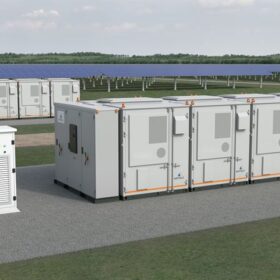South Australia’s constrained renewables to be unleashed as four new syncons spin into action
South Australia is a global hero for its demonstration of a rapid transition to renewable generation. But as renewables supplied more than 60% of the state’s electricity, and pushed out coal and even gas-fired generation, cracks appeared in the system strength and inertia required to keep the grid reliably running. ElectraNet has deployed old, clean-running technology — synchronous condensers — to smooth the gaps.
Ever heard of photovoltachromics, the new tech for solar windows?
Researchers in China have developed a smart solar window tech based on a photovoltachromic device that is able to achieve a high pristine transmittance and to be self-adaptable to control indoor brightness and temperature. The device was assembled via a full solution process in an architecture incorporating glass, a fluorine-doped tin oxide (FTO) layer, a perovskite-based PV cell, an electrochromic gel, another FTO layer, and glass.
Sunday read: the effects of defects
Mónica LiraCantú leads a research group investigating nanostructured materials for photovoltaic energy at the Catalan Institute of Nanoscience and Nanotechnology (ICN2). Recently, her group led a project that looked deep into the crystalline structure of a perovskite solar cell, revealing new information about the formation of defects in the material and how they could be engineered to improve both efficiency and stability. pv magazine caught up with the Barcelona-based scientist to discuss the state of the art in perovskite solar cells and remaining challenges on the road to commercialisation.
Saturday read: Going full circle with battery recycling
With manufacturing ramping up year by year and policies already looking to get ahead of the large volumes of end-of-life products, the landscape for lithium-ion battery recycling is rapidly changing. pv magazine recently spoke with Mari Lundström, associate professor of chemical and metallurgical engineering at Aalto University, to find out what is needed on the research side for the effective recycling of batteries.
AEMO ‘white paper’ points to inverters as possible path to 100% renewables
The Australian Energy Market Operator is looking to fast-track the deployment of advanced inverter capabilities to support Australia’s “once-in-a-lifetime transition” to a power system featuring reduced synchronous generation, such as coal-fired generation.
UNSW research team to target improved solar PV cells after funding win
Researchers at the University of New South Wales will look to improve the quality of advanced solar PV cells after the project secured a share of more than $1.5 million in the latest round of the Australian Research Council’s (ARC) Linkage Project Grants.
Four-terminal heterojunction perovskite tandem solar cell with 30.09% efficiency
Developed by a Vietnamese-Korean research group, the complex PV device was built with a bottom bifacial crystalline silicon perovskite-filtered heterojunction sub-cell that is able to absorb all solar spectra in the short-wavelength range.
Novel plant design for agrivoltaics improves yield
Developed by Chinese researchers, the novel design methodology consists of utilising metal brackets as mounting structures, conventional solar panels, and a grooved glass plate placed between the solar panels. According to its creators, it ensures a farmer’s average income increases by 5.14 times, including the solar power generation business. A system built with this approach should cost around €715 (AU$1145) per kW installed.
Maoneng pushes safety message for Mornington battery system
Less than a week after fire broke out at the Victoria Big Battery in Geelong, Australian renewable energy developer Maoneng has given lithium iron phosphate batteries the tick of approval, declaring it will use the technology at its utility scale battery energy storage system planned for Victoria’s Mornington Peninsula.
Crystal arrangement results in 1,000x more power from ferroelectric solar cells
German researchers developed a lattice arrangement of three different layers of ferroelectric crystals that created a powerful photovoltaic effect.
